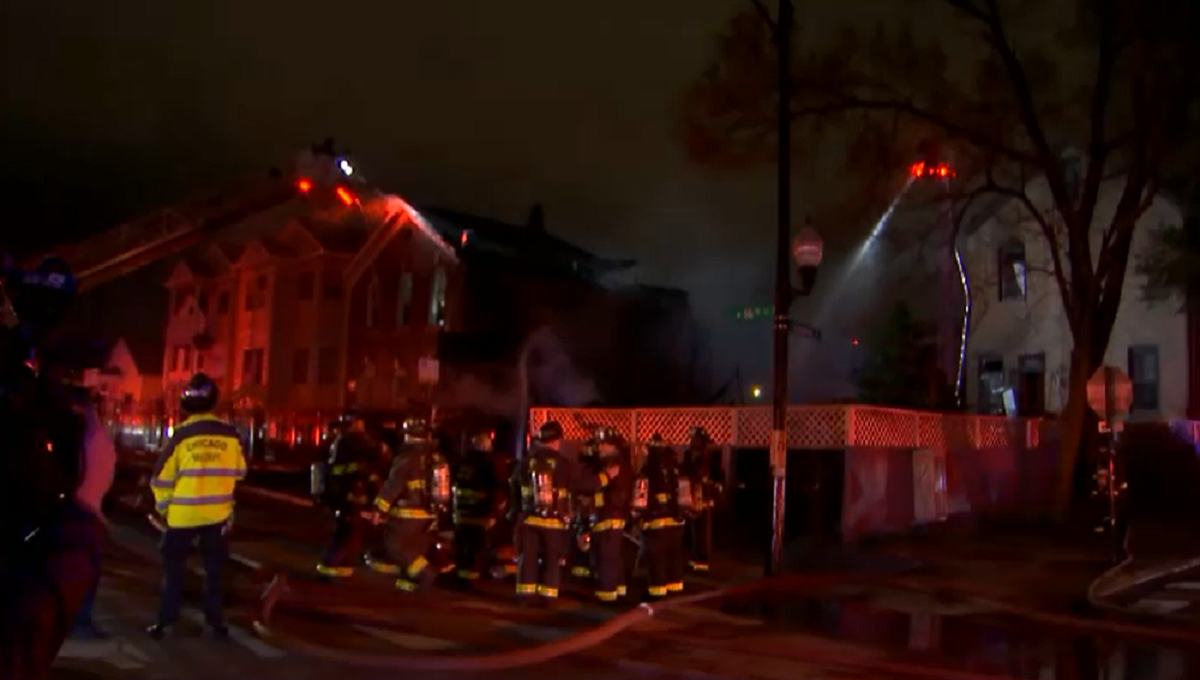The small learjet that crashed in a northwest suburban forest preserve Tuesday afternoon suffered from an apparent in-flight problem days earlier and returned to its originating airport, according to the Chicago Tribune.
The Royal Air cargo jet, tail number N720RA, turned back about 27 minutes into its scheduled 1.5-hour flight to Wheeling's Chicago Executive Airport on Dec. 31st, landing 49 minutes after it left.
The reason for the plane's return is unknown.
The pilot and co-pilot of the plane were killed Tuesday afternoon when their aircraft crashed in a forest preserve near the same airport in Wheeling.
The bodies of both pilots were located but not removed yesterday due to strong currents. The bodies remain in the cockpit, which is submerged about six feet under water, according to NTSB officials who spoke at a news conference today.
The identities of the pilots are being withheld until their families can be notified.
The NTSB plans to use tow cable lines to pull the plane from the water Wednesday, but note that the impending snow storm could hamper their recovery efforts.
Once the plane is removed from the water, the NTSB plans to finish their investigation at an undetermined location. A full investigation could take six to 12 months, officials said.
The complete circumstances surrounding the plane's crash are not yet known.
According to the Federal Aviation Administration, the Learjet was cleared for landing and was making an approach to Runway 34 at the airport about 1:30 p.m. when it went down about a quarter-mile north of Euclid Avenue.
The radar track indicates that the pilot made his approach from the east, but after making a right turn to line up with the runway made a sharp turn to the right and a northeasterly heading, possibly a correction for overshooting his initial turn. It was after the plane made another turn back to a more westerly heading that it disappeared from radar at about 2,000 feet.
NBC Chicago's helicopter, Sky 5, was above wreckage of a plane resting on the west bank of the Des Plaines River. It is one of two distinct debris fields, according to the chief executive of the Mutual Aid Box Alarm System, Jay Reardon.
"The most devastating part of it was the impact of an aircraft," Reardon said, indicating that there was no fire or explosion preceding the crash. Officials are unable to determine the angle of the crash, and offered no theories during two press conferences Tuesday afternoon.
An FAA spokeswoman says the plane had been cleared for a visual approach.
Conditions at the time of the crash were what most pilots would consider perfect, with winds blowing nearly straight down the runway, at 10 knots. Clouds were broken at the time at about 6,000 feet.
The turn from the approach phase to the final line-up with the runway is considered the most critical part of any landing, according to officials.
If an aircraft is turned too steeply, or flown too slowly, or a combination of both, the wings can lose lift. Pilots are aware that what is known as a stall at this portion of the flight can be disasterous. At this phase of the investigation however, officials caution that any speculation about what might have happened would be premature.
The National Transportation Safety Board is now on the scene and heading up the investigation.
Chicago Executive Airport, formerly known as Palwaukee Municipal Airport and Gauthier's Flying Field, is the third busiest airport in the state, logging approximately 200,000 take-offs and landings annually, according to information on its Web site.
Local
The last fatal crash at the airport occured in January 2006 when a twin-engine Cessna plunged into a construction company's storage yard on approach to the airport, according to the Tribune.
FlightAware.com: Track of possible crashed plane | Images of Learjet 35



